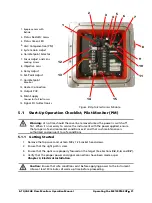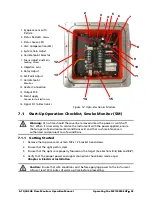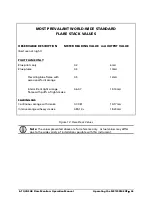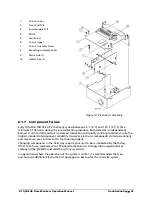
E
2
T QUASAR Flare Monitors Operation Manual
Operating the M8100SM-EXP
•
41
7
Operating the M8100SM-EXP
This section covers the start-up procedures for operating the flare stack Smoke Monitor after the
unit has been installed in accordance with
. To provide insight into
the logic behind the procedure, some background on the field operation of the instrument is
provided.
The LumaSense E
2
T
QUASAR M8100SM-EXP Smoke Monitor is designed to monitor the smoke
(particulate) content in a flare flame. It reports the smoke level via a proportional current
signal, higher as smoke level increases and a lower current for cleaner burning flames.
Instrument setup is affected by several factors including; distance to stack, size of normal flame,
color of normal flame, and type of gas used for the burners.
The goal during QUASAR M8100SM-EXP setup is to set the desired range for the installation and
define the maximum acceptable smoke level directly from the flare stack being monitored. This
is necessary since the instrument provides relative smoke (particulate) level information rather
than an absolute quantification.
Setup of the Smoke Monitor is most easily performed under the flare stack’s normal operating
conditions that is, conditions which give the highest instrument output prior to an actual upset.
These conditions are usually evident by emission of an intermittent primary blue and faint light
orange flame (from pilots, not flared gas) and are used to set mid-scale readings of 0.5 volts on
the analog meter corresponding approximately to 12 mA current output. From this benchmark,
cleaner flames will go downscale and carbon (higher particulate) flames will go upscale.
Two possible adjustments enable the operator to custom set the desired mid-scale reading
corresponding to each flare stack’s normal operating conditions.
•
The system gain precisely adjusts to a pre-upset (normal) condition.
•
The climatic compensation switch for adverse weather conditions.
The following steps are based on the ability to set the Smoke Monitor to 12mA (0.5 on the
analog meter) while operating the flare stack under nominal conditions.
Note:
Refer to Figure 12: Instrument Aiming Concepts and Figure 13: Opto-Electronics
Module for the following start-up procedure.
















































